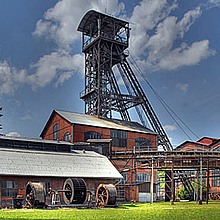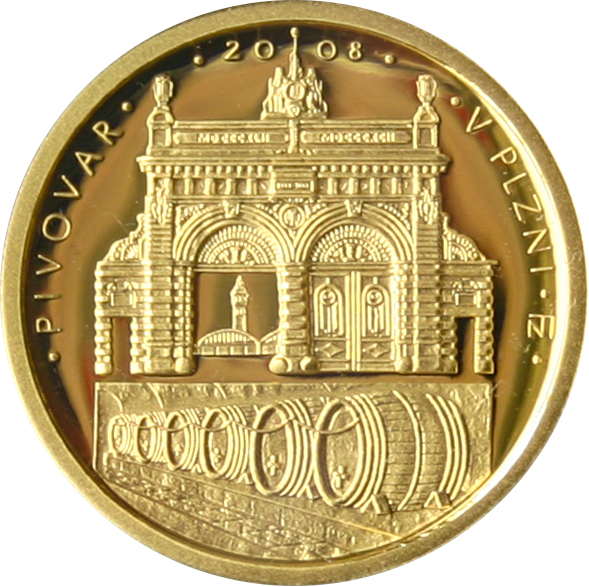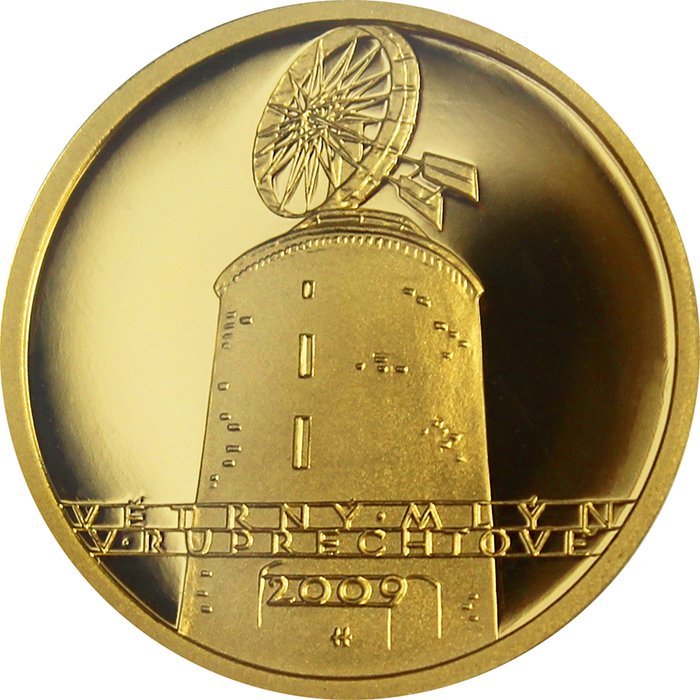Gold Coin 2500 CZK Michal Mine in Ostrava 2010 Proof
exempt from VAT
Detailed description
1/4 Oz gold coin - Cultural monuments of technical heritage - Michal Mine

On the obverse side of the coin, a semi-circular section depicts an electric motor-driven mining machine as an example of the mine's internal equipment. On the right edge of the die is the mark of the Czech Mint and at the bottom of the die is the denomination of the coin with the abbreviation of the monetary unit "2500 CZK". Above the mining machine is the name of the state "CZECH REPUBLIC" and a composition of heraldic animals from the large state emblem. In the centre is the Czech lion, on the right is the Silesian eagle and on the left is the Moravian eagle. The title of the cycle "CULTURAL MONUMENTS OF TECHNICAL HERITAGE" appears in an unsealed description around the perimeter of the coin.
On the reverse side of the coin there is a depiction of the mining tower of the Michal mine. Below the representation of the mining tower is the year of mintage "2010". On the left and right edge of the coin is the unsealed inscription 'MICHAL MINE IN OSTRAVA'. The initials of the author of the coin's design, academic sculptor Zbyněk Fojtů, are placed at the right edge of the coin below the description.
The earliest history of the Michal Mine is connected with the efforts of the Austrian state at that time to promote coal mining as a prerequisite for the development of industry. In 1842, the so-called Montagnard Era laid a circular privileged forge in Michalkovice and a year later began to dig two pits there. The first of these, the Ferdinand pit, disappeared in the 1880s.

The second pit was called the Michal pit after the late court councillor Michael Laier. In 1856, when the state-run mining business was making considerable losses, the mine was bought by the Northern Ferdinand Railway Company, which built and operated a railway from Vienna via Ostrava to the Polish salt mines.
The Michal Mine remained in the ownership of this company until its nationalisation in 1945, when it was incorporated into the Ostrava-Karviná Stone Mine concernMichal Mine before 1912Coal Mines, n.p. In 1946, the mine was renamed after the Social Democratic member of the Austrian Reichstag, Peter Cingr. Since then the name has changed several times.
As part of the restructuring of the heavy industry, the Petr Cingr mine ceased production on 30 May 1993. The last cage went up on a backup mining machine on 2 June 1994. In 1995 the backfilling of the mining pit was completed. In 1994, during the decommissioning works, the Ministry of Culture of the Czech Republic took over the whole area and established the Industrial Museum in Ostrava, later merged with the Institute of Heritage in Ostrava.
This product is part of the following product sets:
Cultural monuments of technical heritage seriesProduct Specifications
Buyback contact form
We will be happy to buy investment metals purchased from us or from our competitors. Our customers always get the highest price offered at any given time. Fill out the form below and we will contact you. Thank you for your trust.


























